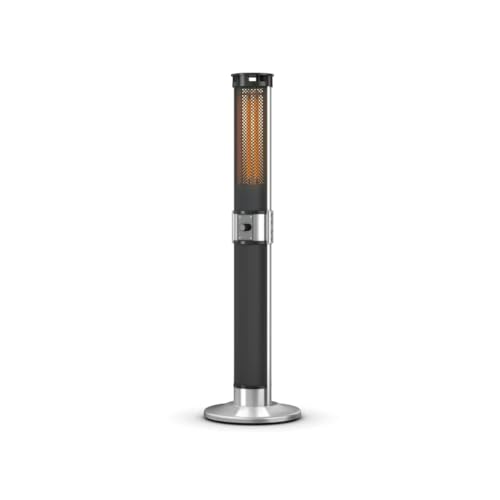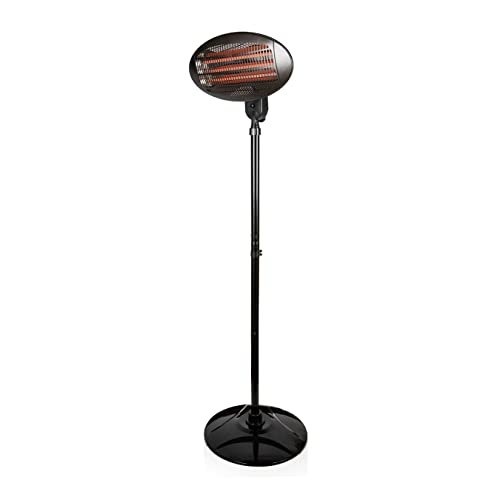Gas Patio Heater RegulatorIf you're planning on cozying up in the cold outdoors with a propane
garden patio heater gas heater, it's crucial to be aware of how to use the appliance. Matthew Griffith, chief of the prevention department at Montreal's Fire Department, says that shoppers should look for products with safety certifications.

It's also important to ensure that there aren't any combustible materials in the vicinity and that the patio heater is securely attached.
Pressure Regulator
Gas regulators are essentially mechanical appliances that we use in our vehicles and homes every day without giving them a second thought. Their invention, which took place 135 years ago, has revolutionized the way natural gas and propane are used for heating, cooking, and welding with oxy-fuel. The fundamental function of regulators is the same, however there are many variations. The regulator is based on an element that senses pressure, typically a fabric-reinforced dialythm to control a valve plug's position and limit gas flow.
The diaphragm is linked to the valve stem with a rod that runs down through the set spring, through the diaphragm, and finally into the valve. The pressure of gas coming from the pipeline or from the house is sensed by this mechanism and it adjusts position of the valve plug to match it to the demand from the house. As the use of gas in the house decreases, the pressure between the regulator and the house reduces as well. This causes the diaphragm of the regulator to deflate downward, and it pushes the valve plug closer to the orifice, limiting the flow. As the
amazon gas patio heater demand increases in the home the valve will open more, increasing the flow.
When the valve plug is closed, it is held in position by the spring force until the demand from the house decreases, which opens the valve further to increase flow. This process, called sizing, is the fundamental operation of the regulator.
When the valve is opened the pressure builds up in the main chamber of the regulator, which is connected to the outlet port of the hose via a venturi tube (see picture). The pressure can be regulated by turning the handle or screw located on the outside regulator. When the screw is turned counterclockwise it increases the pressure. If it is turned clockwise, it decreases the pressure.
When selecting a pressure regulator be aware that the minimum and maximum nominal pressures are set by commercial standards, not the pressure at the supply line. The regulator should also be compatible with the hose you are using. Look for a hose that is labeled as whistle-free, which will feature various sizes of rings to prevent resonant sound from accumulating across the length of the hose.
Thermocouple
Thermocouples operate on the principle that two dissimilar metals in contact at either end create a voltage potential even if they are at extremely different temperatures. They are used to detect the temperature difference between two points in a system and convert this data into an electrical signal that can be read by a thermocouple meter or other instrument. Thermocouples are superior to other sensors, for instance thermostors. They are able to measure extremely high temperatures and work in corrosive conditions.
A pair of dissimilar metals is connected at one end of the sensor to create the measuring (aka hot) junction, and the other end is kept at a fixed temperature, referred to as the reference (aka cold) junction. Thermocouples create small voltages but they are passive devices that don't require power to work. The voltage generated is proportional to the temperature difference between the measuring junction and the reference junction. Thermocouple manufacturers and metrology standard organizations such as NIST provide reference tables of the function E (T) Displaystyle scriptstyle e(T) for each specific thermocouple type.
There are three kinds of thermocouple connections: exposed, grounded and weld. The exposed style of junction extends out of the protective sheath, and provides the fastest response time. A grounded thermocouple is recommended for use in environments with corrosive elements. A thermocouple that is welded is physically isolated from its sheath with mgO powder. This stops gas or moisture from entering and causing error.
A thermocouple that is welded offers the added benefit of being more resistant to vibration. It is recommended for use in harsh environments, and with pressures up to 3000 psi. A thermocouple that has been damaged is usually the result of an insufficient polarity. If the sheath isn't polarized, the two ends of the thermocouple will have different voltages at the measurement junction that could lead to an inaccurate reading and possibly end up damaging the instrument. A malfunctioning thermocouple could be caused by a poorly installed or calibrated sensor.
Thermostat
Gas patio heaters unlike electric heaters which are wired to the wall, are portable and are powered by propane or natural gas. Thermostats regulate the flow of energy into these cylinders to ensure that they do not overflow, but they still provide heat as needed. The thermostat does this by measuring the temperature of air that is passing through it. The thermostat also can tell when the room is at a comfortable temperature and turns off the heating.
Digital thermostats are the most popular. It utilizes a microcontroller that converts a changing electrical resistance into a measurement of temperature. It can perform this task more accurately than older mercury switch thermostats, which utilized mercury coils with three wires that would change according to temperature. This enabled it to tilt a mercury switch connected to the electrical circuit of the air conditioning or heater unit, turning it off or on.
Another type of thermostat is a mechanical one. The thermostat opens when the wax in a small cylinder starts to melt, which is around 180 degrees F. (Different thermostats have different opening temperatures). A rod that connects to the valve then presses into the wax, and opens the valve when it's hot. As the room cools the wax shrinks and the rod is pushed into the cylinder to close the valve.
There are thermostats that can be programmed to alter at different times during the day. You can cut down on energy consumption by setting your heating to switch off and on when you are at work, or asleep, instead of being on all the time. You can also set your thermostat to turn on sooner so that you can get home to an appropriate temperature. Thermostats are also usually equipped with an element called the heat anticipator that stops the heater from switching on too quickly. This is because some parts of the house reach the desired temperature before the thermostat.
Pilot Light
Many newer heating systems, homes and furnaces have done away completely from pilot lights. However, older homes still use them to ignite gas in the burner chamber. If the pilot light ever shut off, it's crucial to know how to re-light it safely.
A pilot light creates tiny flames that heat the thermocouple, which produces electricity and keeps the gas valve open. When the pilot flame ceases to burn the thermocouple cools and ceases to produce electricity, closing the valve. Pilot lights are found on most propane and natural gas appliances, including water heaters.
To relight the pilot, you first need to shut off the gas in the appliance. Then, you have to take out any doors or panels that may be in the way of getting to the pilot light. Locate the pilot light tube and carefully follow the procedure printed on the front of the appliance for opening it. Once you've reopened the pilot then turn the gas valve knob back to "on".
The primary reason to keep the pilot light on is to ensure safety. If it's accidentally extinguished the
best gas patio heater constantly escaping from the pilot light tube could be accumulating in your home until sparks from the spark from a cigarette lighter or static electricity ignites it and causes an explosion. To avoid this, pilot tubes are equipped with a built in cutoff valve.
A pilot light that is constantly burning is not only dangerous but also wastes energy. The pilot light consumes between $7 to $18 worth of gas each month, according to different studies. This wasted fuel also places more strain on the air cooling system during summer time. Another concern with a pilot light is that it can attract spiders, who can spin webs that clog the pilot tubes. Finally, a constant flame can emit trace amounts of the compound mercaptan, which creates the rotten egg smell found in natural gas. If you're worried about these issues, think about purchasing a remote-controlled gas fire or replacing your fireplace with a more modern efficient and efficient model.


 It's also important to ensure that there aren't any combustible materials in the vicinity and that the patio heater is securely attached.
It's also important to ensure that there aren't any combustible materials in the vicinity and that the patio heater is securely attached.